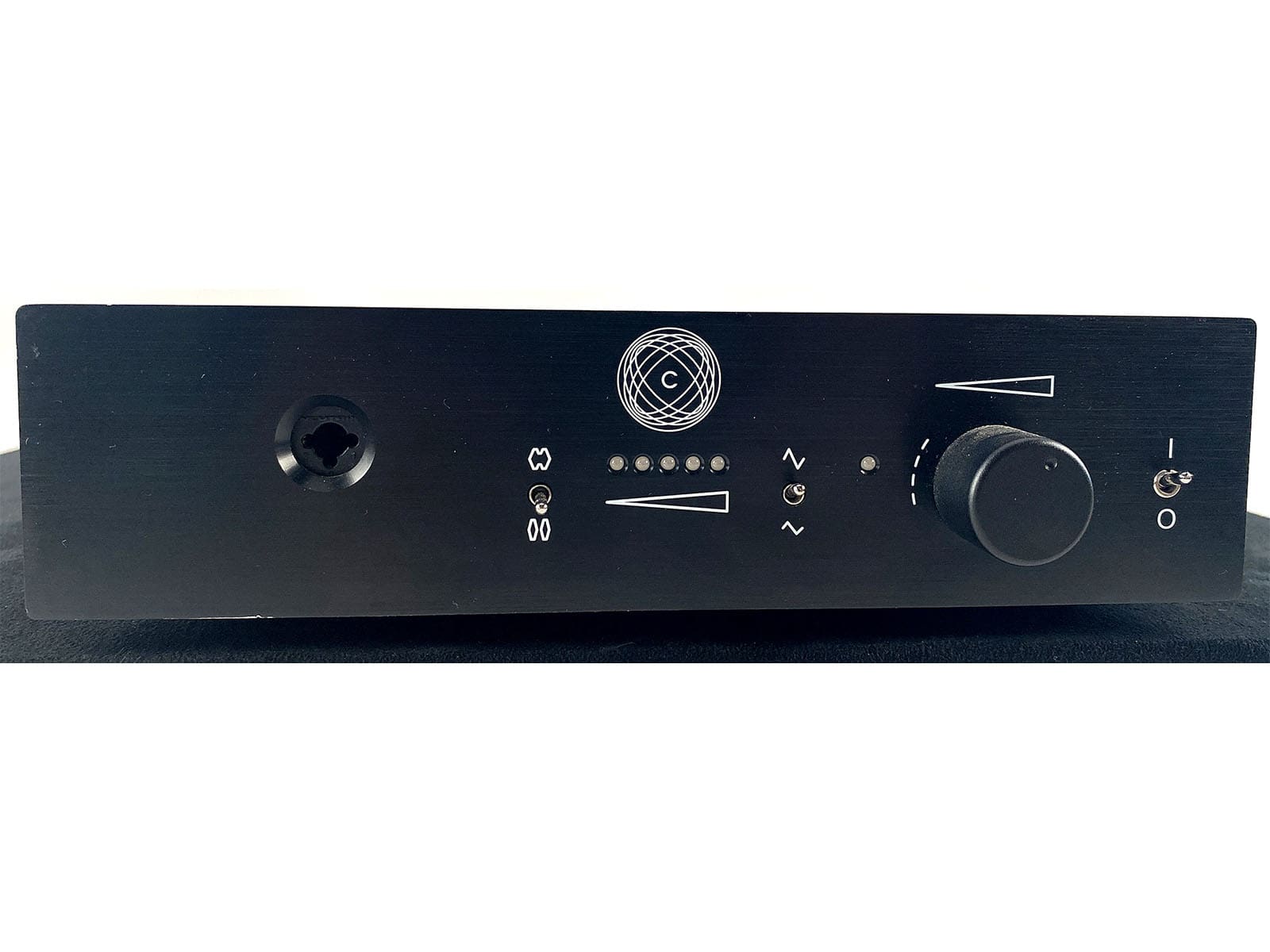
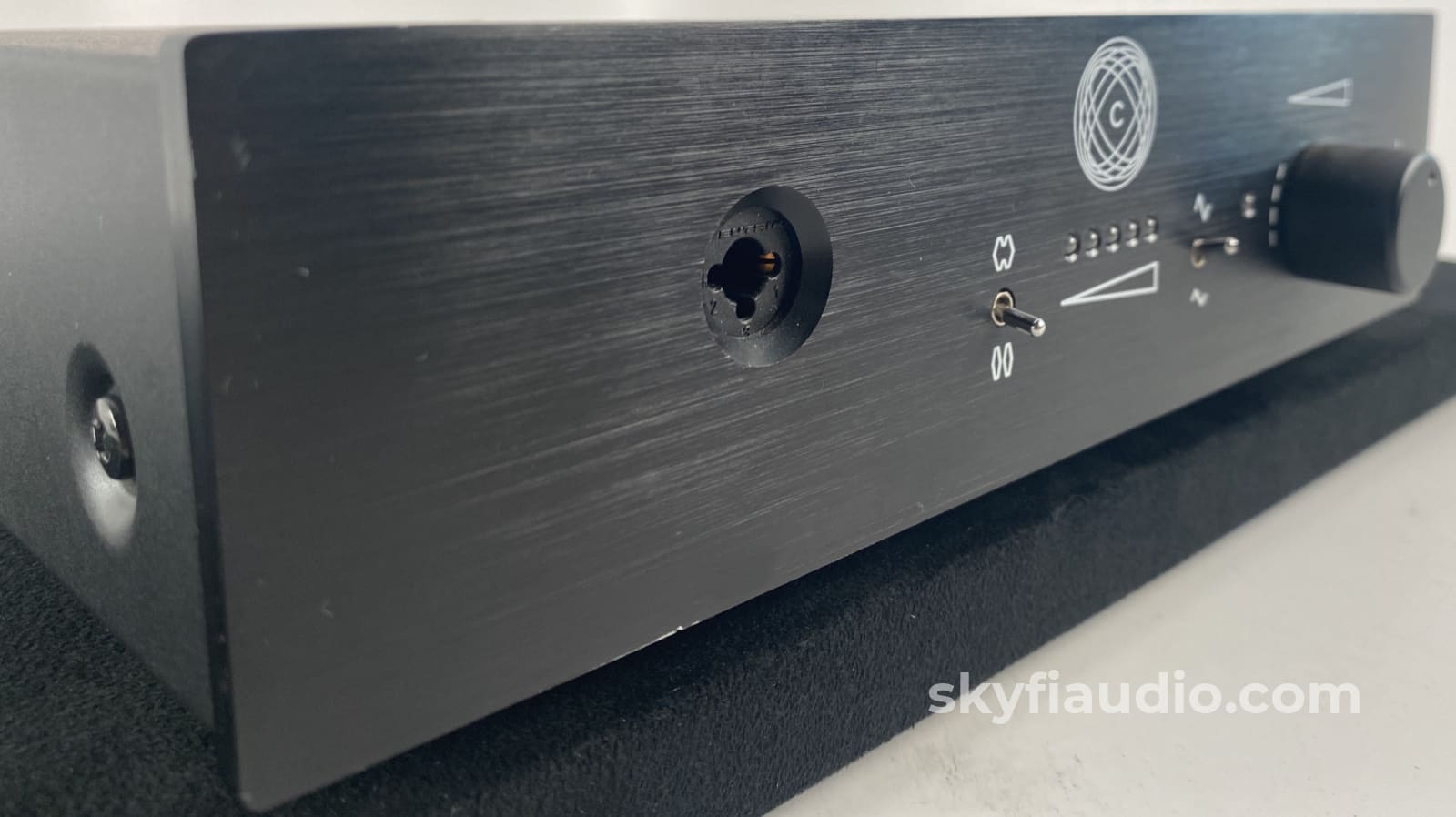
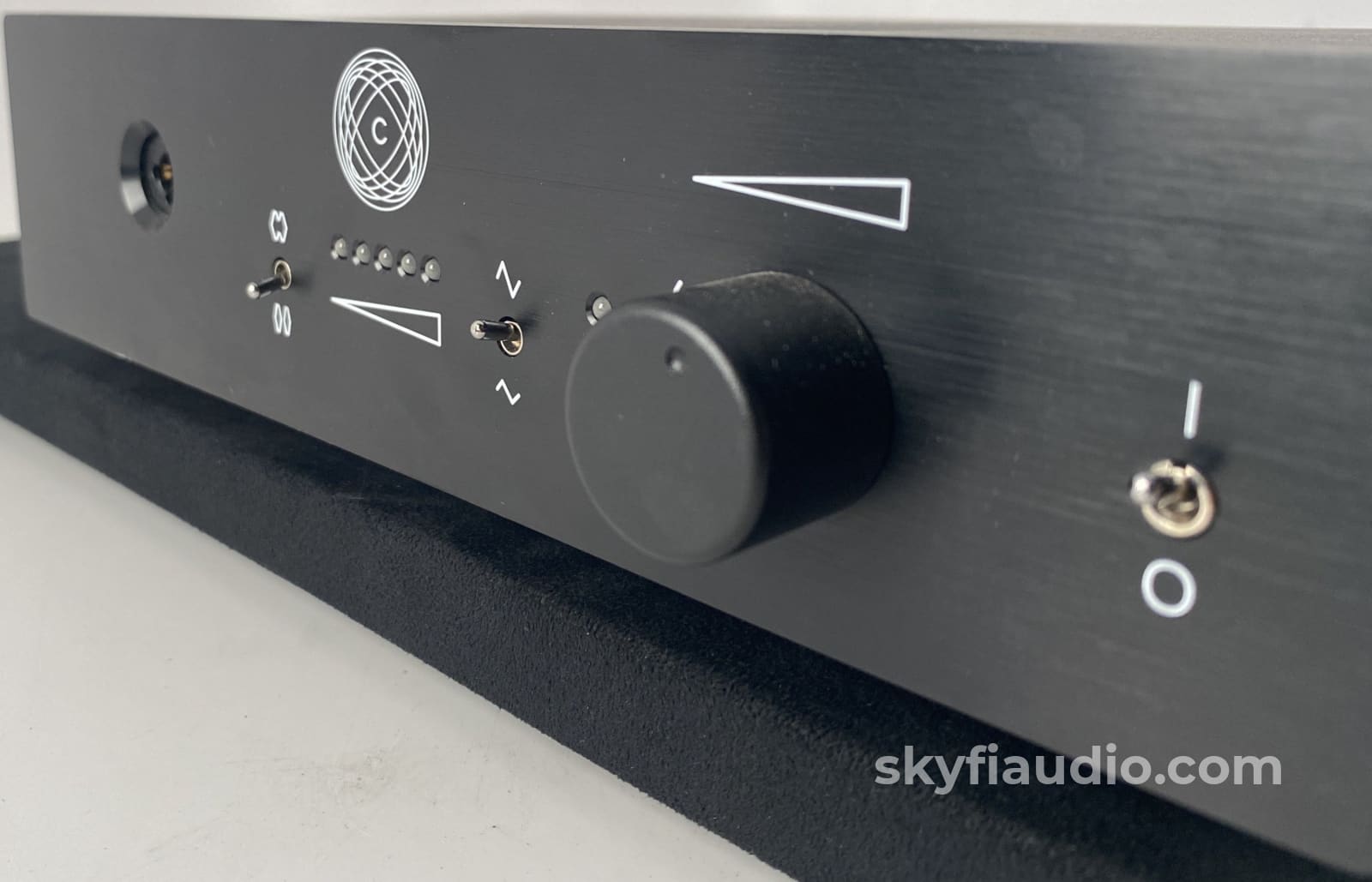
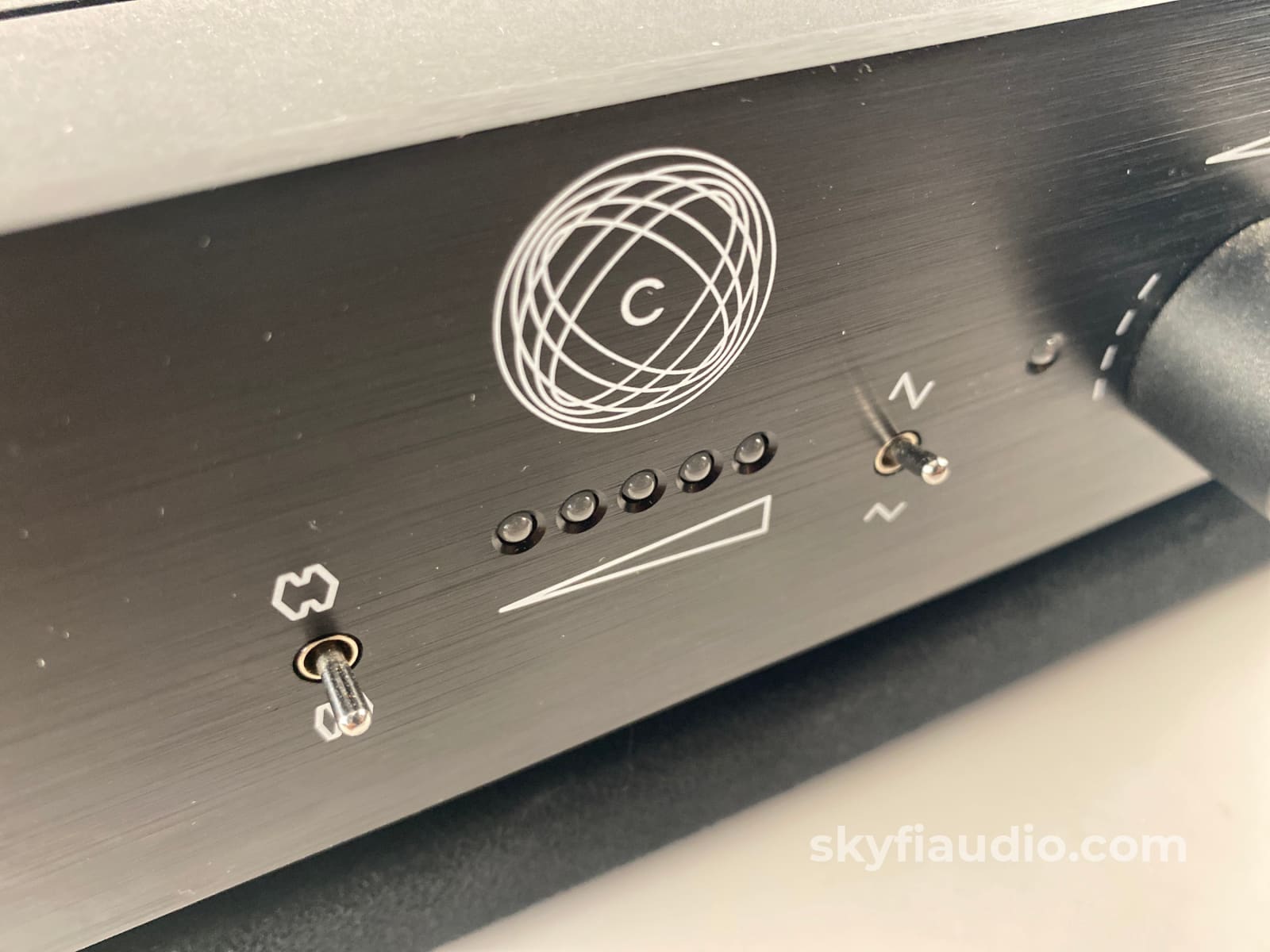
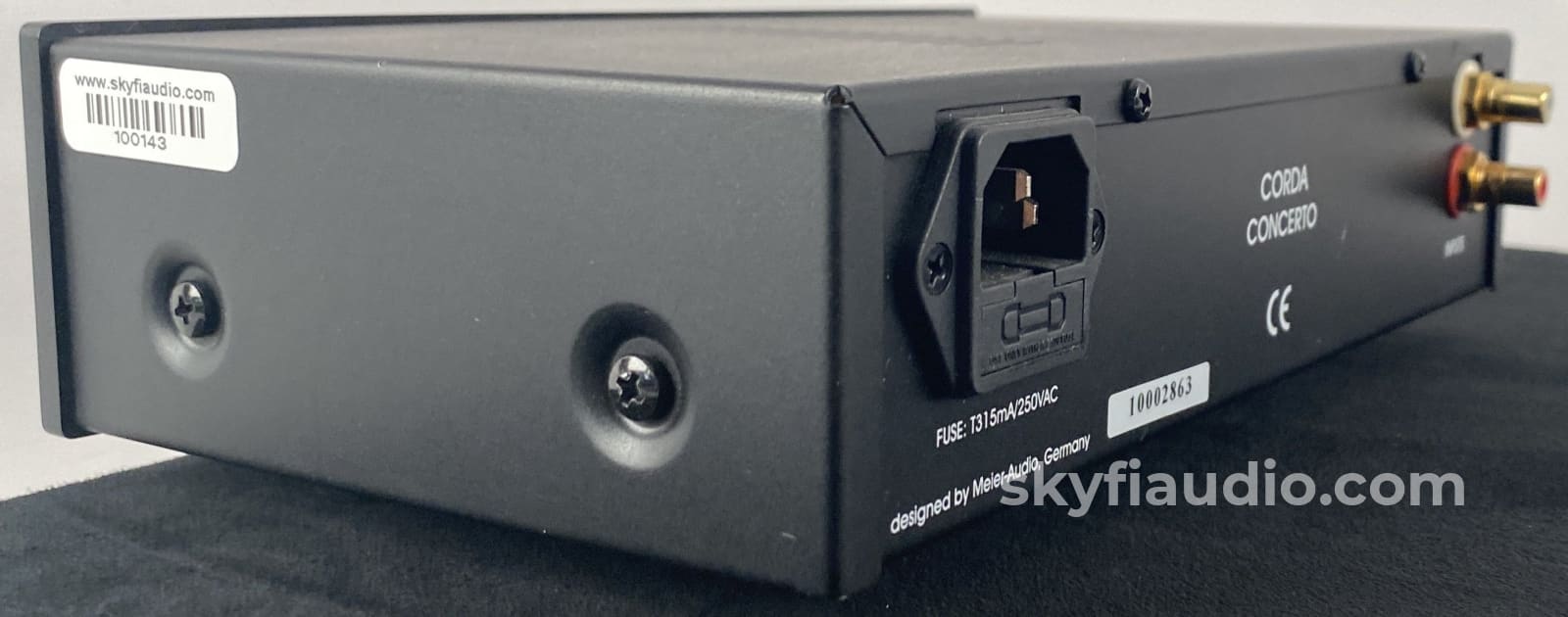

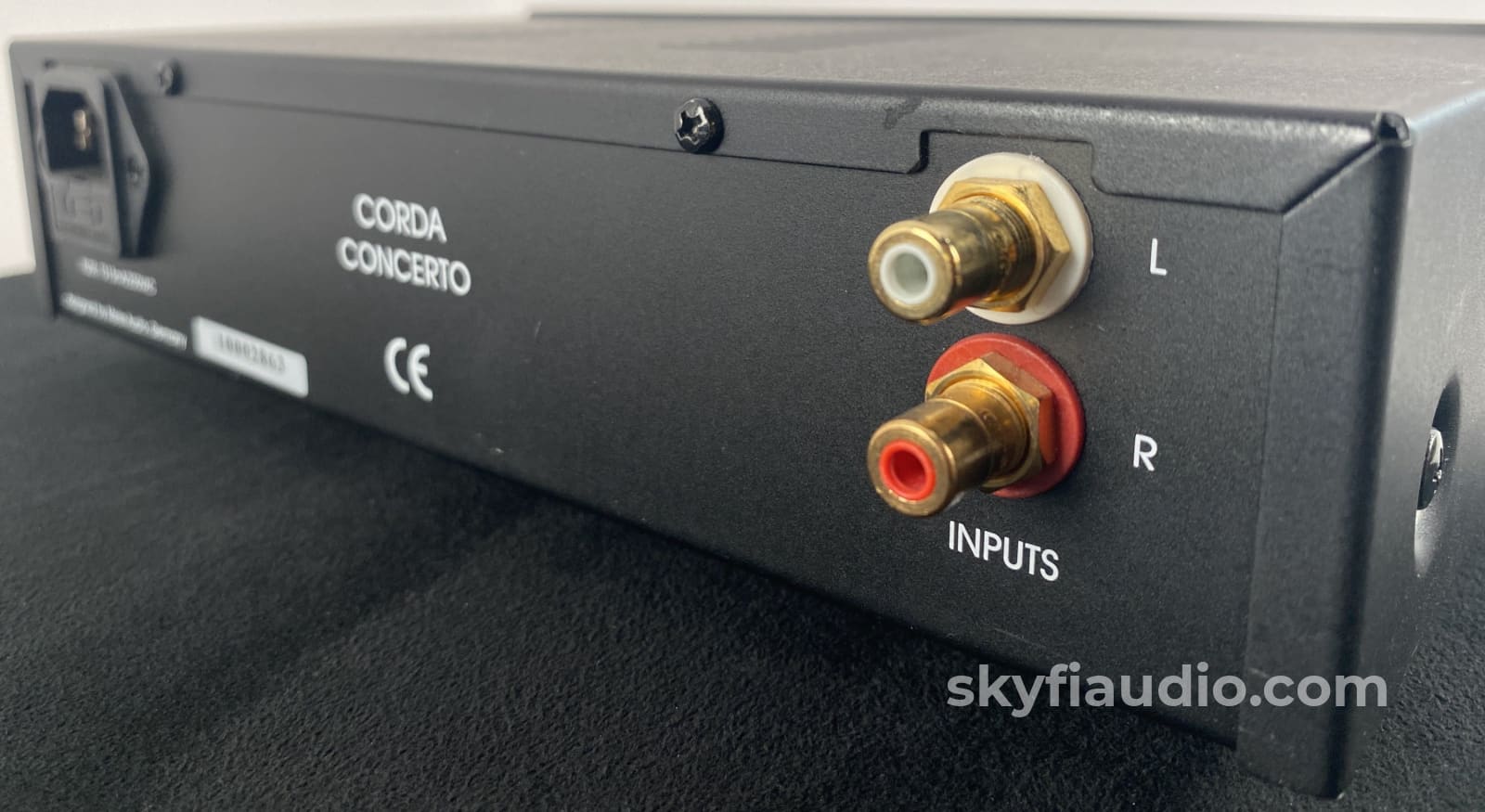

Meier Audio Corda Concerto Headphone Amplifier
Free Shipping on Most Electronics - Excludes Speakers and Items Requiring Freight - Contiguous U.S. Only
Pickup currently unavailable at SkyFi 479

Meier Audio Corda Concerto Headphone Amplifier
SkyFi 479
479 South Broad Street
Glen Rock NJ 07452
United States
From an excellent 6moons audio review:
Jan Meier had something new. "Interested in my new Concerto? It will probably sell for the same price as the StageDAC you recently tested. But this is a pure headphone amplifier, basically something of a Symphony without the DAC section. The amp uses an active balanced ground to give most the benefits of balanced drive without rewiring headphones; built-in analog crossfeed; and a digitally actuated analog volume control with 63 x 0.7dB steps.
This volume control is very special. It uses an analog potentiometer and an ADC that measures its position. The DAC then controls six relays to change the amplification factor. You will hear it click when the volume is changed.
More from the Meier Audio website:
CROSSFEED
In normal daily life people use various mechanisms to locate sources of sound.
Firstly, the sound of a source to the right side of the listener (e.g. the right loudspeaker) not only reaches the right ear but, attenuated and delayed, is also heard by the left ear. The level of attenuation and the delay time of this crossfeed signal provide important directional information.
Secondly, the soundwaves are partly absorbed and partly reflected by the tissues of the head. Reflections at the oracles (pinnae) interfere with the soundwaves that directly enter the ear-channel and amplify or attenuate specific frequency components. Since these reflections depend on the direction of the soundwave the "color" of the sound changes with the direction of the source.
Thirdly, reflections of the soundwaves from the walls, ceiling and floor of our listening room produce reverberation that conveys an extra feeling of space.
The information obtained by these mechanisms is further refined by movements of the head. Changes in sound levels, delay times and sound color refine the sense of direction. For a demonstration, blindfold a friend and ask him to locate a ticking clock that you have hidden in the room. He will start turning his head although he can't see anything. With his head in a fixed position an exact localization is much more difficult.
LISTENING BY HEADPHONES
All the mechanisms of directional listening are missing when we use headphones. The sound at the right ear will no longer reach the left ear and pinnae-reflections no longer interfere with the original soundwave. Moreover, the headphones are directly attached to our head, and so head movements no longer add information. Reverberation is also not present.
As a result, the sound heard by headphones seems to stick to the inside of our head and to our ears and an unnatural soundfield is created. The brain misses logical clues for direction and this subconsciously results in mental stress. Some people cannot tolerate this stress and are unable to use headphones.
In principle, digital soundprocessors can simulate all the mechanisms for directional listening but to obtain a good result requires a complex individual calibration. In particular, pinnae-reflections are very complex and listener-specific.
Fortunately, the mean directional information is provided by the time delay and level of attenuation of the sounds that reaches the opposite ear. A crossfeed filter can electronically simulate this process and, with appropriate attenuation and delay, add some of the right audiosignal to the left channel and vice -versa. This considerably reduces the adverse symptoms of headphone listening.
THE NATURAL CROSSFEED FILTER
A straightforward approach to mimic crossfeed is to take the original stereo signal, attenuate its amplitude and have it delayed. Then cross the two channels and add the processed signals to the original stereo signal. In a mathematical formula:
Vleft,out (t) = Vleft,in (t) + a.Vright,in (t-tdelay)
Vright,out (t) = Vright,in (t) + a.Vleft,in (t-tdelay).........a < 1
The factor a normally is made frequency dependant. Crossfeed by its nature is stronger at low frequencies than at high frequencies.
A conventional crossfeed filter mimics the sound of a left or a right sound source most adequately, but the frequency-spectrum of a source in front of the listener is unnecessarily disturbed. For this in-front source, the left and right audio signals are equal: a mono signal. In principle, these signals need no crossfeed. However, with conventional solutions, there still is, and the audio signals at the headphone-transducers become:
Vleft,out(t) = Vright,out(t) = Vleft,in(t) + a.Vleft,in(t-tdelay).........a < 1
Especially in the high frequency range, the delayed crossfeed signal interferes with the original input and attenuates specific frequencies. The frequency-curve is no longer flat but shows a larger number of dips. This is the so-called Comb-filter effect.
A unique feature of the crossfeed circuitry on the CORDA headphone amplifiers is that it "recognizes" the virtual positions of the instruments and singers in a recording. The sound of an instrument in the middle of the soundstage will be equally present in both audio-channels and isn't given any crossfeed. A crossfeed signal is only generated for instruments that are not placed at the center. The more off-center the instrument is placed, the stronger the crossfeed and the longer its delay. The frequency-curve is flat again and the Comb-filter effect is eliminated. This is called "natural crossfeed".
Please click here for detailed specifics regarding our specialized packing process that separates us from the rest.
|
Item |
Included |
|
Original Box |
No |
|
Manual |
No |
|
Remote |
Not Applicable |
|
Cables |
Yes - Power |
|
Physical Condition |
8 |
|
Working Condition |
10 |
Choose options








